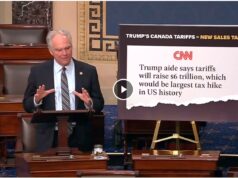( – promoted by lowkell)
 As published in the Virginian-Pilot, March 13, 2011.
As published in the Virginian-Pilot, March 13, 2011.
Which came first, the chicken or the egg? This age-old question can be applied to offshore wind.
Investors eyeing the Atlantic coast right now see most states hard at work striving to meet their renewable portfolio standards (RPS) which, by requiring a certain percentage of a utility’s electricity to come from renewable sources, will ultimately cause these states to see up to 25,000 megawatts of wind energy development by 2015 and 50,000 MW by 2025. This regulatory structure thus provides market certainty for investors, and only those states with a mandatory RPS are in position to create a market for renewable energy credits, which is essential for luring investment into the burgeoning renewable energy industry.
Which Atlantic Coast port will be home to the manufacturing of the massive offshore wind turbine blades and at least some of the thousands of other parts making up each turbine? Which port gets its shipbuilding industry retrofitted to accommodate the installation and maintenance of those wind farms? Virginia has many advantages – great ports, workers and wind resources – but unless we act soon, the investments will be made elsewhere.
Unfortunately, Virginia stands alone in the mid-Atlantic with a voluntary RPS, one that affords Virginia’s utilities high rates of return on their investment while doing nothing to create a marketplace within the commonwealth for new investors. Without a mandatory RPS in Virginia, there is no commitment from either our utilities or regulators to support renewable projects. Investors see Virginia as an uncertain marketplace where their investment could be rejected at any time in favor of fossil fuel energy generation.
Right now, Dominion isn’t investing in offshore wind because the cost is too high. The price can’t come down until the cost of turbine parts comes down. Those costs come down only if they start getting manufactured here in America. Investors in such manufacturing facilities will invest only in areas where there are serious development proposals. Such proposals are made in areas only where utilities have entered into purchase agreements to buy that offshore wind power so as to comply with RPS goals.
For offshore wind to break this chicken-egg cycle in Virginia, three things must happen. One, the more than 10,000 jobs created from Virginia’s offshore wind development need to be put on a scale and weighed against the potential $1 to $2 increase in our monthly electric bill. That is an easier pill for ratepayers to swallow, knowing the huge potential for good-paying, local, career-length jobs that comes attached to that increase.
It’s also easier to swallow if the cost of offshore wind was compared to the true cost of fossil fuel-fired electricity rather than to the artificially low price that appears on our bills. The true cost includes what we pay for medical care to treat asthma and other diseases caused by pollution. Honest accounting of the true cost of coal should also include the price volatility of fossil fuels (there is no fuel cost associated with wind), and the more than $45 million in tax subsidies guaranteed to the coal industry in Virginia each year by the General Assembly.
The most jobs will be created in the region whose legislators, utilities, and regulators stand committed to a long-term vision for the future that is clean and sustainable. A lot more needs to be done, and Dominion and the governor need to quickly step up to the plate if that region is to be Hampton Roads.
Eileen Levandoski is conservation program manager for the Sierra Club’s Virginia chapter. She lives in Virginia Beach.



 Sign up for the Blue Virginia weekly newsletter
Sign up for the Blue Virginia weekly newsletter








